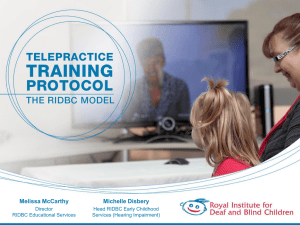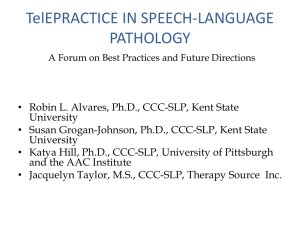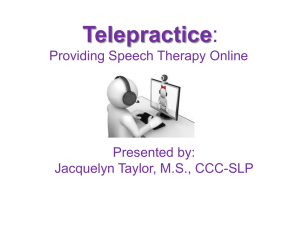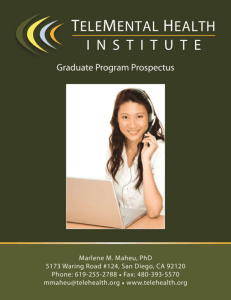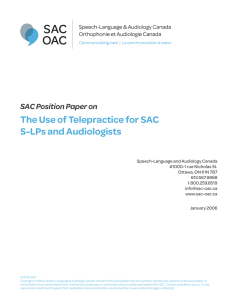Coming Soon to Hunter College: "Telepractice"
advertisement
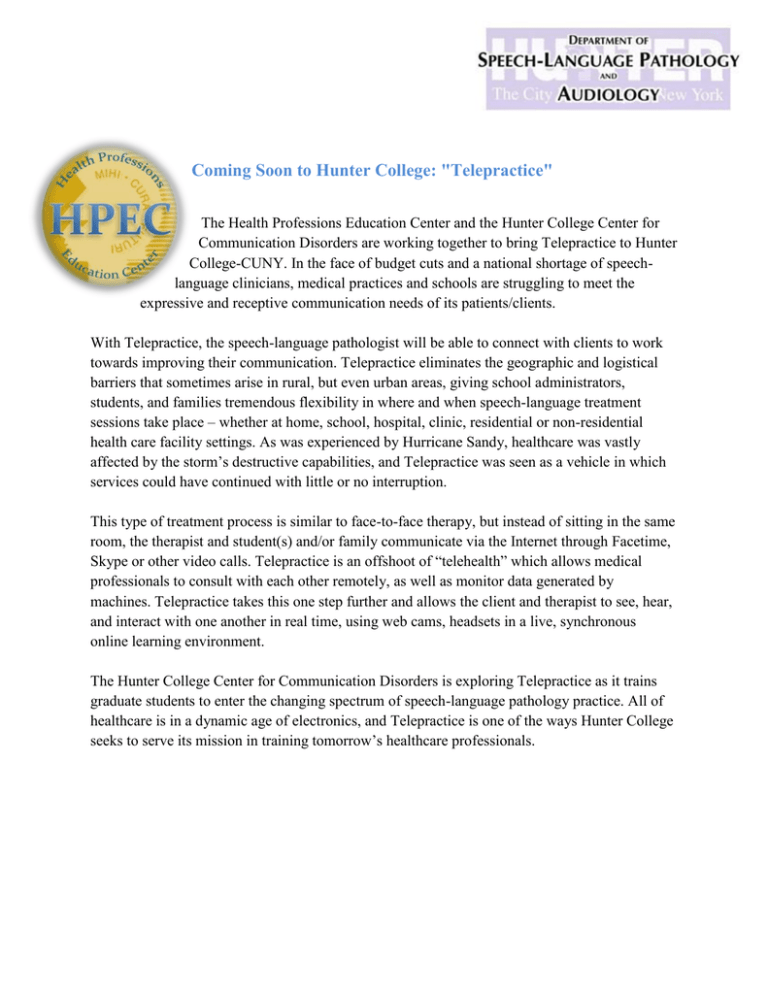
Coming Soon to Hunter College: "Telepractice" The Health Professions Education Center and the Hunter College Center for Communication Disorders are working together to bring Telepractice to Hunter College-CUNY. In the face of budget cuts and a national shortage of speechlanguage clinicians, medical practices and schools are struggling to meet the expressive and receptive communication needs of its patients/clients. With Telepractice, the speech-language pathologist will be able to connect with clients to work towards improving their communication. Telepractice eliminates the geographic and logistical barriers that sometimes arise in rural, but even urban areas, giving school administrators, students, and families tremendous flexibility in where and when speech-language treatment sessions take place – whether at home, school, hospital, clinic, residential or non-residential health care facility settings. As was experienced by Hurricane Sandy, healthcare was vastly affected by the storm’s destructive capabilities, and Telepractice was seen as a vehicle in which services could have continued with little or no interruption. This type of treatment process is similar to face-to-face therapy, but instead of sitting in the same room, the therapist and student(s) and/or family communicate via the Internet through Facetime, Skype or other video calls. Telepractice is an offshoot of “telehealth” which allows medical professionals to consult with each other remotely, as well as monitor data generated by machines. Telepractice takes this one step further and allows the client and therapist to see, hear, and interact with one another in real time, using web cams, headsets in a live, synchronous online learning environment. The Hunter College Center for Communication Disorders is exploring Telepractice as it trains graduate students to enter the changing spectrum of speech-language pathology practice. All of healthcare is in a dynamic age of electronics, and Telepractice is one of the ways Hunter College seeks to serve its mission in training tomorrow’s healthcare professionals.
